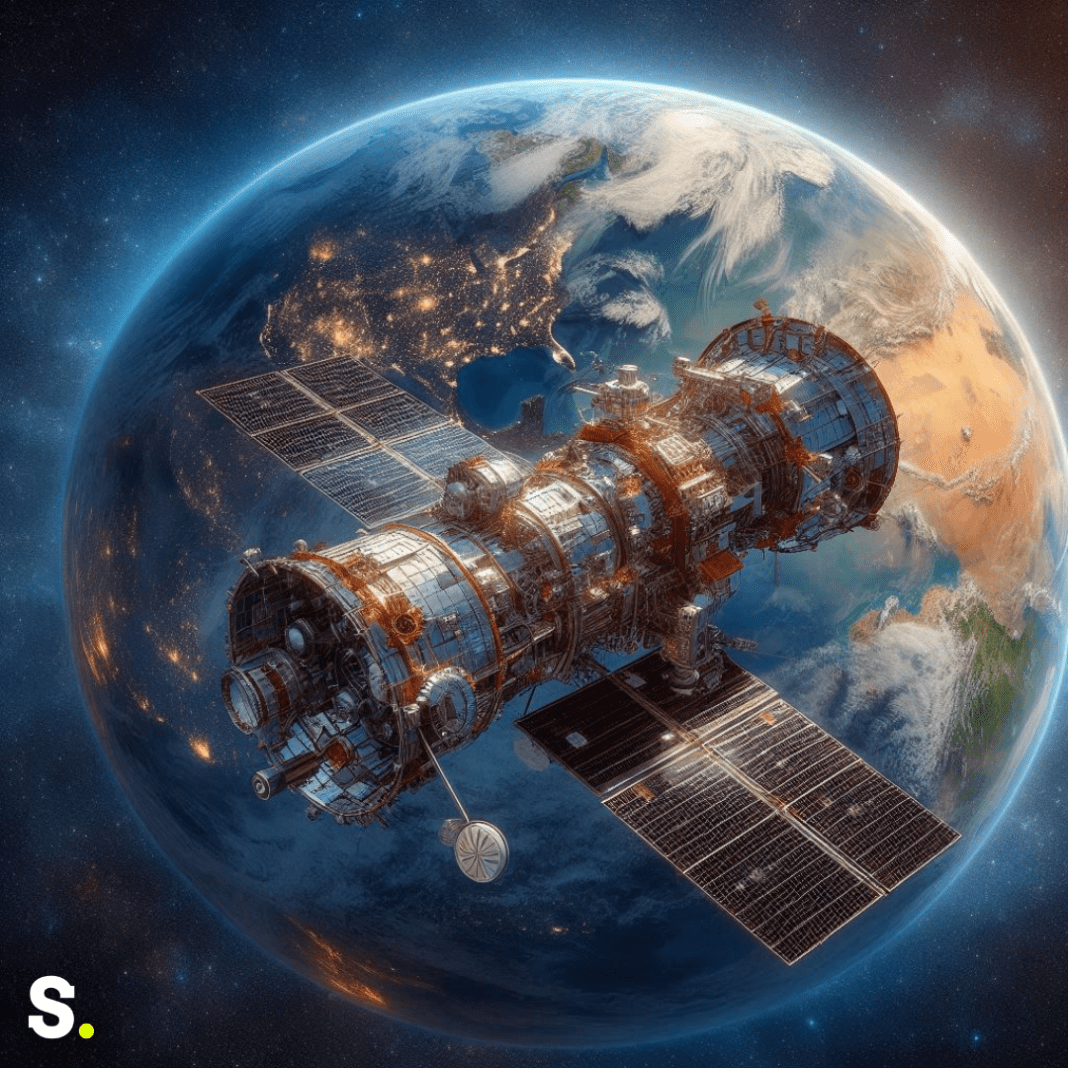Since humanity first ventured into space in the late 1950s, our primary goal has been to explore the universe, understand more about the cosmos, and collect extensive data about our solar system and the galaxy we inhabit. One of the most invaluable tools we’ve deployed for this purpose is the space telescope. These telescopes come in various shapes and sizes and can observe a wide range of electromagnetic spectra, from gamma rays to radio signals.
Early Ventures and Significant Milestones
The Dawn of Space Telescopes
The concept of space telescopes emerged in the early 20th century, with scientists proposing the idea of telescopes orbiting in space to observe the universe free from atmospheric distortion. This idea was championed by astronomer Lyman Spitzer, who in 1946 wrote about the “Astronomical Advantages of an Extra-Terrestrial Observatory.”
The first successful space telescope was the Orbiting Astronomical Observatory 2 (OAO-2), launched by NASA on December 7, 1968. This telescope, designed to study ultraviolet emissions, remained operational until 1973. It was preceded by OAO-1, which was launched on April 8, 1966, but its mission was cut short due to a power failure just three days after launch. Despite these early challenges, the OAO series marked a significant milestone, leading to numerous important discoveries, including the detection of the first quasar and the first X-ray pulsar.
X-Ray and Gamma-Ray Observations
The first satellite dedicated to X-ray astronomy was Uhuru, launched on December 12, 1970. It remained active for three years and paved the way for future X-ray observatories such as the Einstein Observatory (HEAO 2), BeppoSAX, and the Advanced Satellite for Cosmology and Astrophysics (ASCA).
Gamma-ray astronomy also saw significant advancements with the launch of the first space gamma-ray telescope, SAS-2 (Explorer 48), in 1972. This was followed by the launch of the Fermi Gamma-ray Space Telescope in 2008, which is still operational today, providing valuable insights into high-energy phenomena in the universe.
Visible Light and Infrared Observations
Space telescopes designed to observe visible light have made some of the most profound contributions to our understanding of the cosmos. The Hubble Space Telescope, launched in April 1990, remains one of the most iconic and productive space observatories. Hubble has provided stunning images of distant galaxies, nebulae, and star clusters, greatly enhancing our knowledge of the universe’s structure and evolution.
The Kepler Mission, launched in 2009, focused on finding planets orbiting distant stars. It has discovered thousands of exoplanets, significantly expanding our understanding of planetary systems beyond our own.
Infrared and submillimeter observations began with the Submillimeter Wave Astronomy Satellite (SWAS) in 1998. Infrared telescopes like the Spitzer Space Telescope (launched in 2003) have allowed astronomers to peer into dusty regions of space, revealing the birthplaces of stars and planetary systems.
Microwave and Radio Observations
Microwave observation of space has been conducted by several space telescopes, including the Cosmic Background Explorer (COBE), Odin, the Wilkinson Microwave Anisotropy Probe (WMAP), and Planck. These missions have provided detailed maps of the cosmic microwave background radiation, offering critical insights into the universe’s early conditions and its subsequent evolution.
Radio astronomy from space has been achieved with two major missions: HALCA (1997-2005) and RadioAstron (2011-). These telescopes have extended our ability to study celestial phenomena at radio wavelengths, which are often inaccessible from ground-based observatories due to Earth’s atmosphere.
Categories of Space Telescopes
Space telescopes generally fall into three categories based on their observational focus: those studying Earth, those detecting signals from within our solar system, and those looking beyond our solar system. This diversity in focus allows scientists to gather a comprehensive understanding of both our immediate cosmic neighborhood and the distant universe.
Earth Observation
Telescopes dedicated to observing Earth provide critical data for understanding our planet’s atmosphere, climate, and surface changes. These observations help monitor natural disasters, track environmental changes, and support various scientific and practical applications. Missions like the Hubble Space Telescope occasionally turn their gaze toward Earth, contributing to our understanding of our own planet from the vantage point of space.
Solar System Exploration
Telescopes focusing on our solar system study planets, moons, asteroids, and comets. They provide detailed images and data about these objects, helping scientists learn more about their composition, behavior, and history. Missions like the Mars Reconnaissance Orbiter and the Juno spacecraft have given us unprecedented views of Mars and Jupiter, respectively.
Deep Space Observation
Telescopes designed for deep space observation aim to explore the distant universe beyond our solar system. These instruments study stars, galaxies, black holes, and other celestial phenomena. They provide insights into the formation and evolution of the universe, the nature of dark matter and dark energy, and the existence of exoplanets. The Hubble Space Telescope, James Webb Space Telescope, and Kepler Mission are prime examples of telescopes focused on deep space exploration.
Major Space Telescope Missions
Hubble Space Telescope
A key component of modern astronomy is the Hubble Space Telescope (HST). Hubble has made many important discoveries since it was launched in 1990. It has helped determine the universe’s expansion rate, provided evidence for the existence of dark energy, and offered detailed observations of distant galaxies, nebulae, and exoplanets. Hubble’s images, such as the Hubble Deep Field, have given us some of the deepest views of the universe ever obtained.
Chandra X-ray Observatory
Launched in 1999, the Chandra X-ray Observatory is the world’s most powerful X-ray telescope. It has observed high-energy regions of the universe, such as the remnants of supernovae, the areas around black holes, and the hot gas in galaxy clusters. Chandra’s observations have significantly advanced our understanding of these energetic phenomena.
Spitzer Space Telescope
The Spitzer Space Telescope, launched in 2003, was the last of NASA’s Great Observatories to be deployed. Spitzer focused on the infrared part of the spectrum, allowing it to see through cosmic dust clouds that obscure visible light. It has provided detailed images of star-forming regions, planetary systems, and distant galaxies. A significant advancement in the study of planets outside of our solar system was made possible by Spitzer, the first observatory to directly detect light from an exoplanet.
James Webb Space Telescope
The James Webb Space Telescope (JWST), launched on December 25, 2021, is set to be the successor to Hubble. With its advanced infrared capabilities and a 6.5-meter primary mirror, JWST is designed to study the early universe, galaxy formation, and the atmospheres of exoplanets. This ambitious mission, developed in partnership with the European Space Agency (ESA) and the Canadian Space Agency (CSA), aims to provide unprecedented views of the cosmos and answer some of the most fundamental questions about the universe’s origins.
Other Notable Missions
Several other space telescope missions have made significant contributions to astronomy:
International Ultraviolet Explorer (IUE): Launched in 1978, IUE provided valuable ultraviolet data on various celestial objects for over 18 years.
Herschel Space Observatory: Launched in 2009, Herschel observed the far-infrared and submillimeter wavelengths, studying the formation of stars and galaxies.
Planck Observatory: Also launched in 2009, Planck mapped the cosmic microwave background with unprecedented accuracy, enhancing our understanding of the universe’s early history.
Kepler Mission: Launched in 2009, Kepler discovered thousands of exoplanets, many of which are in the habitable zones of their parent stars.
Transiting Exoplanet Survey Satellite (TESS): Launched in 2018, TESS continues the search for exoplanets, focusing on bright, nearby stars.
Future Prospects and Impact
Space telescopes have completely changed how we perceive the cosmos. They have provided critical data that has transformed our knowledge of cosmology, stellar evolution, and planetary systems. As technology advances, future space telescopes are expected to offer even more detailed and expansive views of the cosmos.
The Legacy of Hubble and Beyond
The planned observatories and the forthcoming James Webb Space Telescope missions will carry on Hubble’s legacy. These new instruments will build on Hubble’s achievements, offering deeper insights into the universe’s mysteries.
Unveiling the Early Universe
The James Webb Space Telescope aims to study the first stars and galaxies that formed after the Big Bang. By observing the universe’s early light, JWST will help astronomers understand how the first galaxies formed and evolved, shedding light on the processes that shaped the cosmos.
Exoplanet Exploration
Space telescopes like Kepler and TESS have vastly expanded our knowledge of exoplanets. JWST and future missions will continue this exploration, studying the atmospheres of exoplanets and searching for signs of habitability. These efforts bring us closer to answering the profound question of whether life exists beyond Earth.
Advancing Technology and Collaboration
The development of space telescopes involves cutting-edge technology and international collaboration. Missions like JWST, a partnership between NASA, ESA, and CSA, demonstrate the global effort required to achieve such ambitious scientific goals. The technological advancements made during these missions often have broader applications, benefiting other fields of science and technology.
Space telescopes have revolutionized our understanding of the cosmos. From the early days of the Orbiting Astronomical Observatory to the advanced capabilities of the James Webb Space Telescope, these instruments have provided invaluable data and stunning images that have deepened our understanding of the cosmos. As we continue to explore the universe with ever more sophisticated tools, the legacy of space telescopes will undoubtedly continue to shape our knowledge of the vast and wondrous universe we inhabit.




